Non-native species are animals or plants that have been introduced into an area in which they do not naturally occur. We need information on where invasive non-native species occur, especially new arrivals in Scotland, to support management including biosecurity and, in some cases, eradication.
Report a non-native species
If you would like to record any non-native species you can record it directly on iRecord.
|
Invasive non-native species (INNS), sometimes referred to as 'invasive alien species', are those non-native species that can spread rapidly and become dominant in an area or ecosystem, causing adverse ecological, environmental and economic impacts. Some invasive non-native species can also affect human health.
It is important to remember that, while there are over 900 non-native species in Scotland, only a minority become invasive, but these few can have serious negative impacts.
In Scotland, it is illegal to release, plant or allow to spread any non-native species into the wild.
We need information on where invasive non-native species occur, especially new arrivals in Scotland, to support management including biosecurity and, in some cases, eradication. Through this site, we would like to encourage the submission of records on the most concerning and damaging invasive non-native species.
Non-native species of concern
Given the numerous environmental, health and economic impacts that invasive non-native species can cause, there is a pressing need to understand which invasive non-native species species are currently found where in Scotland, if they are spreading and establishing and, particularly importantly, to be aware as early as possible when new invasive non-native species arrive for the first time.
There are many reasons why we wish to record invasive non-native species in Scotland. Each invasive non-native species fits into one of the following categories, each of which would require different responses from the relevant authorities and other responsible or affected parties:
- The species is not currently in the wild in Scotland and new records are essential, particularly where a rapid response to tackle the problem is possible
- The species recently arrived in Scotland and new records are essential
- The species is already in Scotland in localised populations and we need to understand distribution better to support management
- The species is already widespread in some areas of Scotland and we need to know about new populations in new areas
The first ten invasive non-native species of concern to feature on this site are presented here, by the type of habitat where the species is most likely to be found. The Scottish statutory organisations dealing with invasive non-native species are, with the help of a range of partners, developing a longer list of invasive non-native species of the greatest concern which will, in due course, be included here.
| Freshwater species |
|
North American Signal Crayfish (Pacifastacus leniusculus)
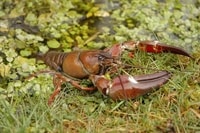
© Copyright Trevor Renals
|
Species is already in Scotland in localised populations and we need to understand distribution better to support management
|
|
Zebra Mussel (Dreissena polymorpha)
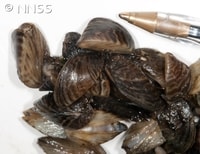
© Crown Copyright 2009 GBNNSS
|
The species is not currently in the wild in Scotland and new records are essential particularly where a rapid response to tackle the problem is possible
|
|
Killer Shrimp (Dikerogammarus villosus)
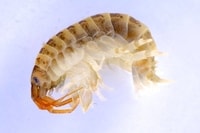
© Copyright Environment Agency
|
The species is not currently in the wild in Scotland and new records are essential, particularly where a rapid response to tackle the problem is possible
|
|
New Zealand Pigmyweed (Crassula helmsii)
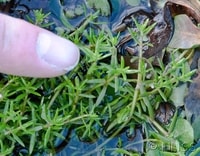
© Crown Copyright 2009 GBNNSS
|
The species is already in Scotland in localised populations and we need to understand distribution better to support management
|
| Woodland habitat species |
|
Muntjac Deer (Muntiacus species)
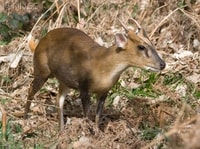
© Crown Copyright 2009 GBNNSS
|
The species is not currently in the wild in Scotland and new records are essential, particularly where a rapid response to tackle the problem is possible
|
| Other land habitats and vertebrate INNS species |
|
American Skunk Cabbage (Lysichiton americanus)
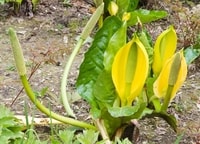
© Crown Copyright 2009 GBNNSS
|
The species is already in Scotland in localised populations and we need to understand distribution better to support management
|
|
Raccoon (Procyon lotor)

© Crown Copyright 2009 GBNNSS
|
The species is not currently in the wild in Scotland and new records are essential, particularly where a rapid response to tackle the problem is possible
|
|
Ruddy Duck (Oxyura jamaicensis)
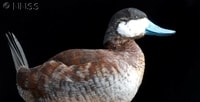
© Crown Copyright 2009 GBNNSS
|
Species is already in Scotland in localised populations and we need to understand distribution better to support management
|
| Marine habitat species |
|
Chinese Mitten Crab (Eriocheir sinensis)
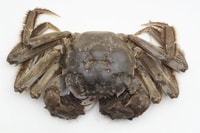
© Crown Copyright 2009 The Food and Environment Research Agency (FERA)
|
The species is not currently in the wild in Scotland* and new records are essential, particularly where a rapid response to tackle the problem is possible. *There is a record of a dead mitten crab from the River Clyde in 2014 but it has not yet been verified as a live species in Scotland.
|
|
Slipper Limpet (Crepidula fornicata)
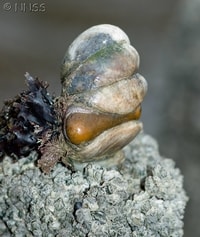
© Crown Copyright 2009 GBNNSS
|
The species is not currently in the wild in Scotland and new records are essential, particularly where a rapid response to tackle the problem is possible
|
What will happen to my report?
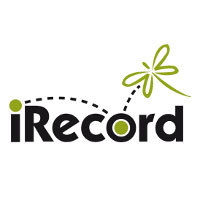
When you send a report in through this portal on Scotland's environment web, we send it straight to the iRecord website. iRecord is a website for sharing wildlife observations, including associated photos. Your data will be kept secure and will be regularly backed up. Automatic checks will be applied to your observations to help spot potential errors, and experts can review your sightings.
iRecord data are stored in a secure database, are archived daily and accessible to anyone via the website. Records entered will also be available to relevant individuals and organisations, e.g. recording schemes and societies, local environmental records centres and the Archive for Marine Species and Habitats Data (DASSH), at full capture resolution to enable verification and sharing via the National Biodiversity Network (NBN) Atlas.
Wherever possible, verified data will be made freely publicly available, data will be automatically supplied from iRecord to the NBN Atlas on behalf of National Recording Schemes. For other schemes, data from iRecord will be collated alongside other datasets before being made available to the NBN Atlas.
Report a non-native species
If you would like to record any non-native species you can record it directly on iRecord.
This page was reviewed on 30 Nov 2019
Adobe Acrobat Reader is the free, trusted leader for reliably viewing, annotating and signing PDFs.
Download Adobe Acrobat Reader











